Diets Rich in Calcium and Vitamin D for Strong Bones

Diets Rich in Calcium and Vitamin D for Strong Bones
Maintaining strong and healthy bones becomes increasingly important as we age, especially for middle-aged individuals between 40-55 years old. Calcium and vitamin D are essential nutrients that play a pivotal role in bone health, reducing the risk of osteoporosis and fractures. This article explores practical dietary strategies to ensure adequate intake of these nutrients, tailored to the lifestyle and nutritional needs of middle-aged adults in the United States.

Why Calcium and Vitamin D Are Crucial
Calcium’s Role in Bone Health
-
Calcium is the most abundant mineral in the body, primarily stored in bones and teeth. It strengthens bone structure by forming calcium phosphate salts, which harden bones .14.
-
Without sufficient calcium intake, bones weaken over time, increasing the risk of fractures and osteoporosis .14.
Vitamin D’s Role in Bone Health
-
Vitamin D helps the body absorb calcium efficiently from food. It also supports muscle function, reducing fall risks that can lead to fractures .14.
-
A deficiency in vitamin D can lead to osteomalacia (soft bones) or exacerbate osteoporosis .14.
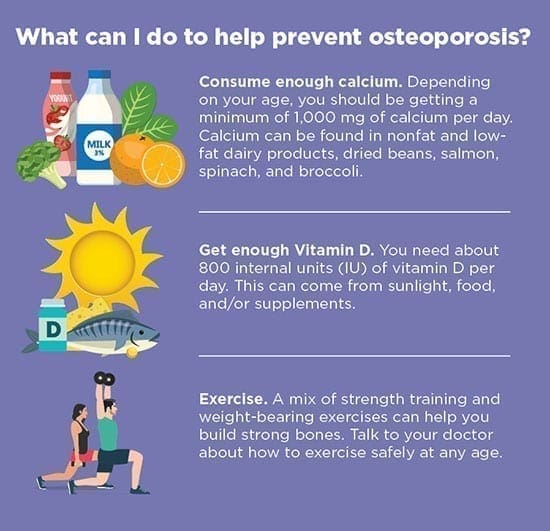
Recommended Daily Intake
Middle-aged individuals should aim for:
-
Calcium: 1,000 mg/day for men aged 50-70; 1,200 mg/day for women over 50 .11 .6.
-
Vitamin D: 600 IU/day up to age 70; 800 IU/day for adults over 70 .12 .11.

Top Food Sources of Calcium
Incorporating calcium-rich foods into your diet is an effective way to meet daily requirements. Here are some excellent options:

Dairy Products
-
Part-skim ricotta cheese (4 oz): 335 mg calcium .3.
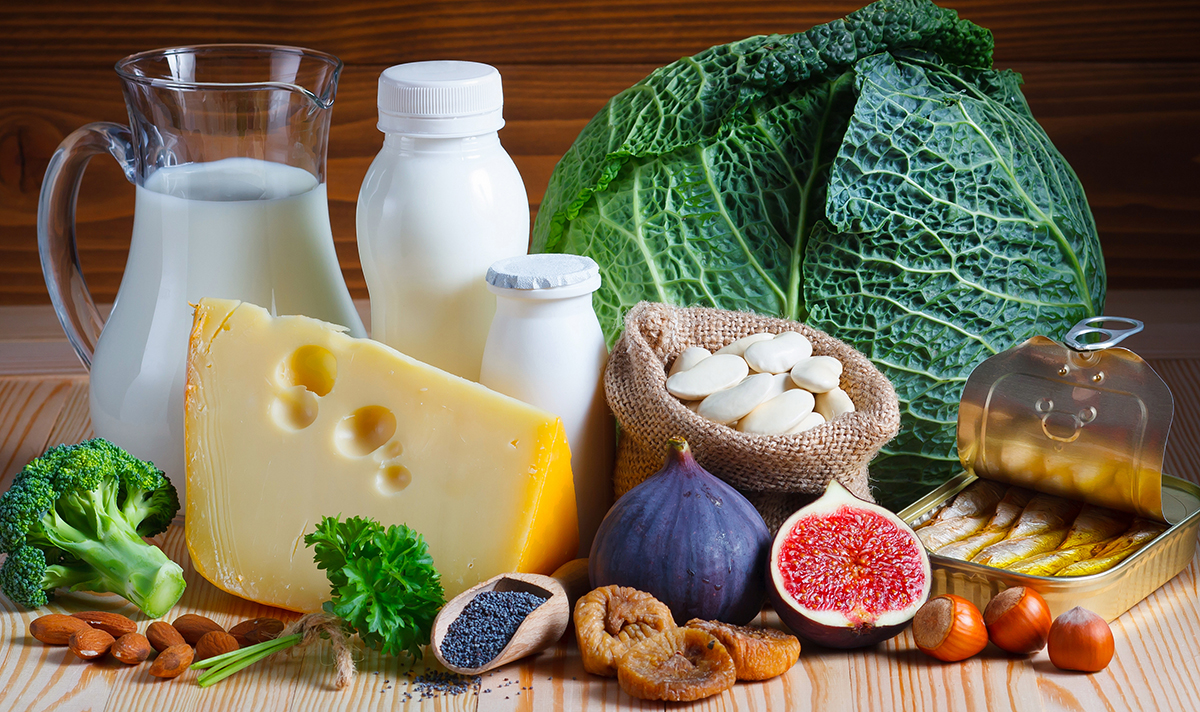
Seafood
-
Sardines with bones (3 oz): 300 mg calcium .6.
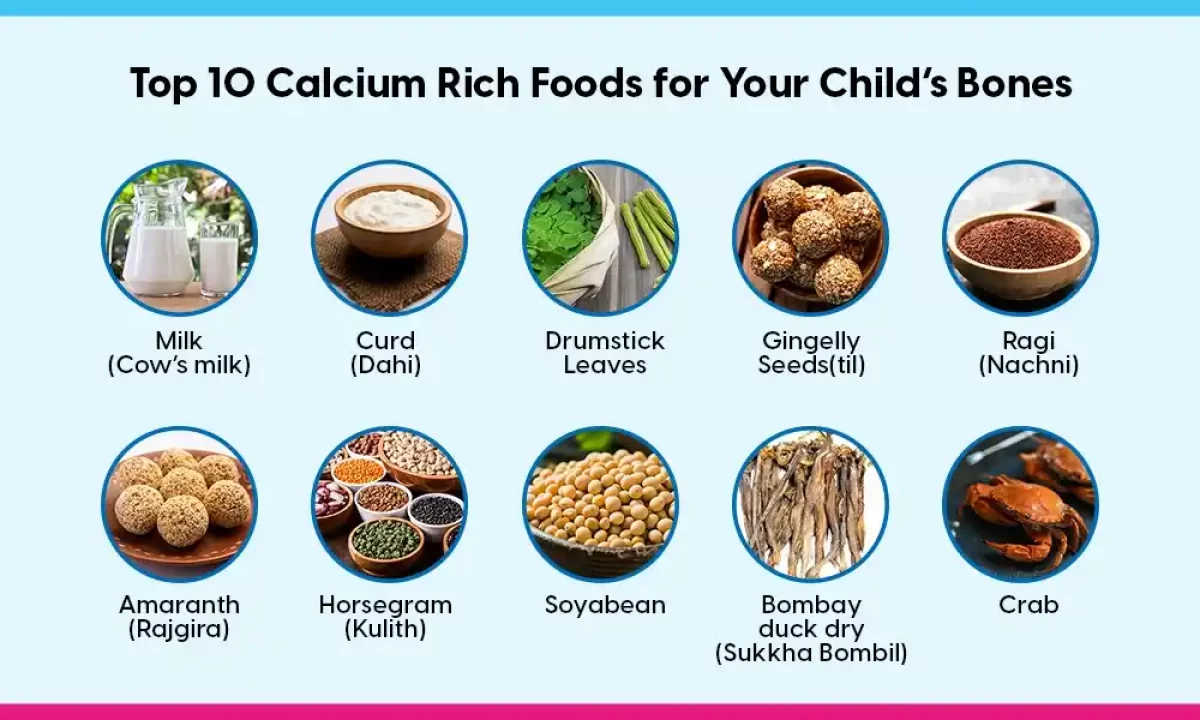
Plant-Based Options
-
Tofu (½ cup): Up to 400 mg calcium (check labels) .6.
-
Leafy greens like kale, collard greens, and bok choy (½ cup cooked): 60–100 mg calcium .6 .4.

Fortified Foods
-
Fortified orange juice (1 cup): Up to 350 mg calcium .7.
-
Fortified cereals: Varies by brand; check labels for calcium content .7.
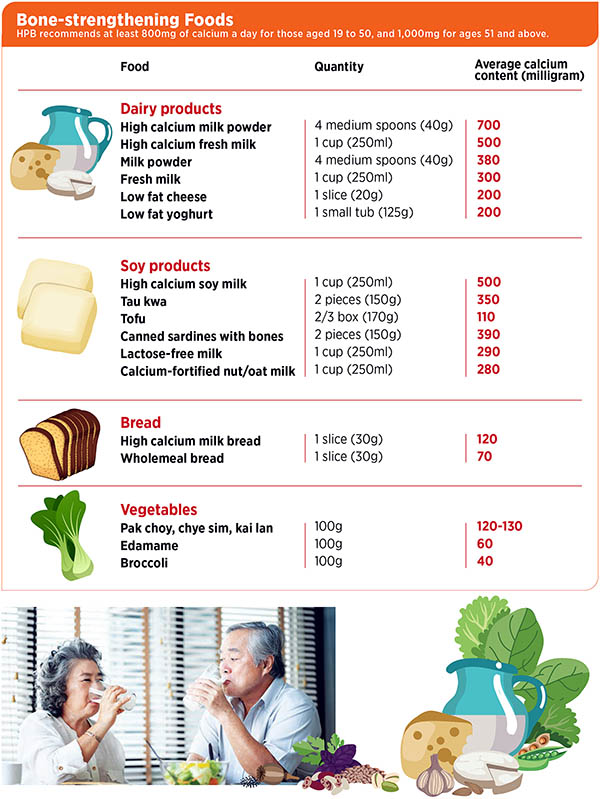

Top Food Sources of Vitamin D
Vitamin D is harder to obtain through diet alone but can be supplemented by sunlight exposure or fortified foods:
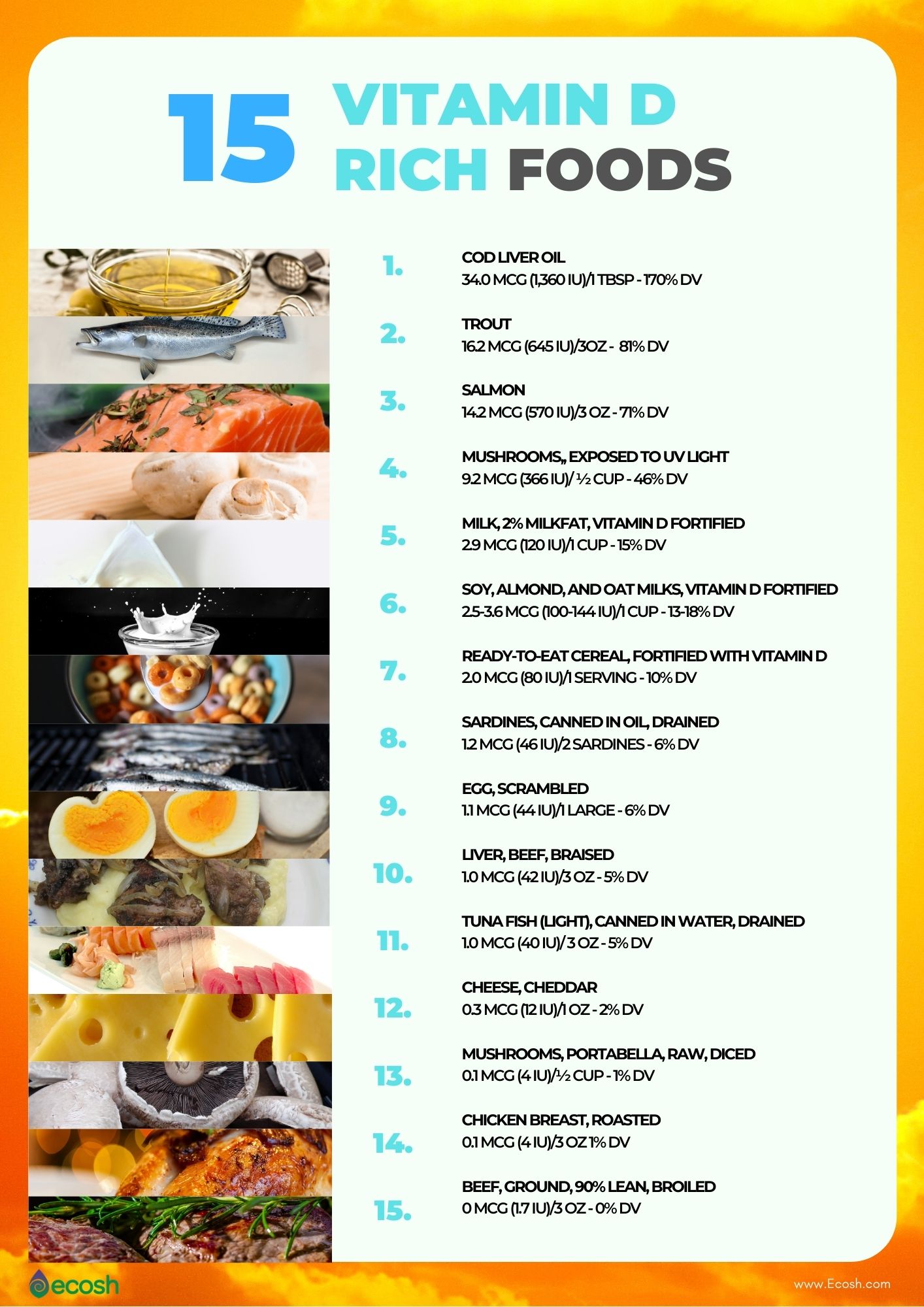
Fatty Fish
-
Salmon (3 oz): 12 mcg vitamin D .6.
-
Mackerel (3 oz): 6 mcg vitamin D .6.
-
Sardines (3 oz): 4 mcg vitamin D .6.








